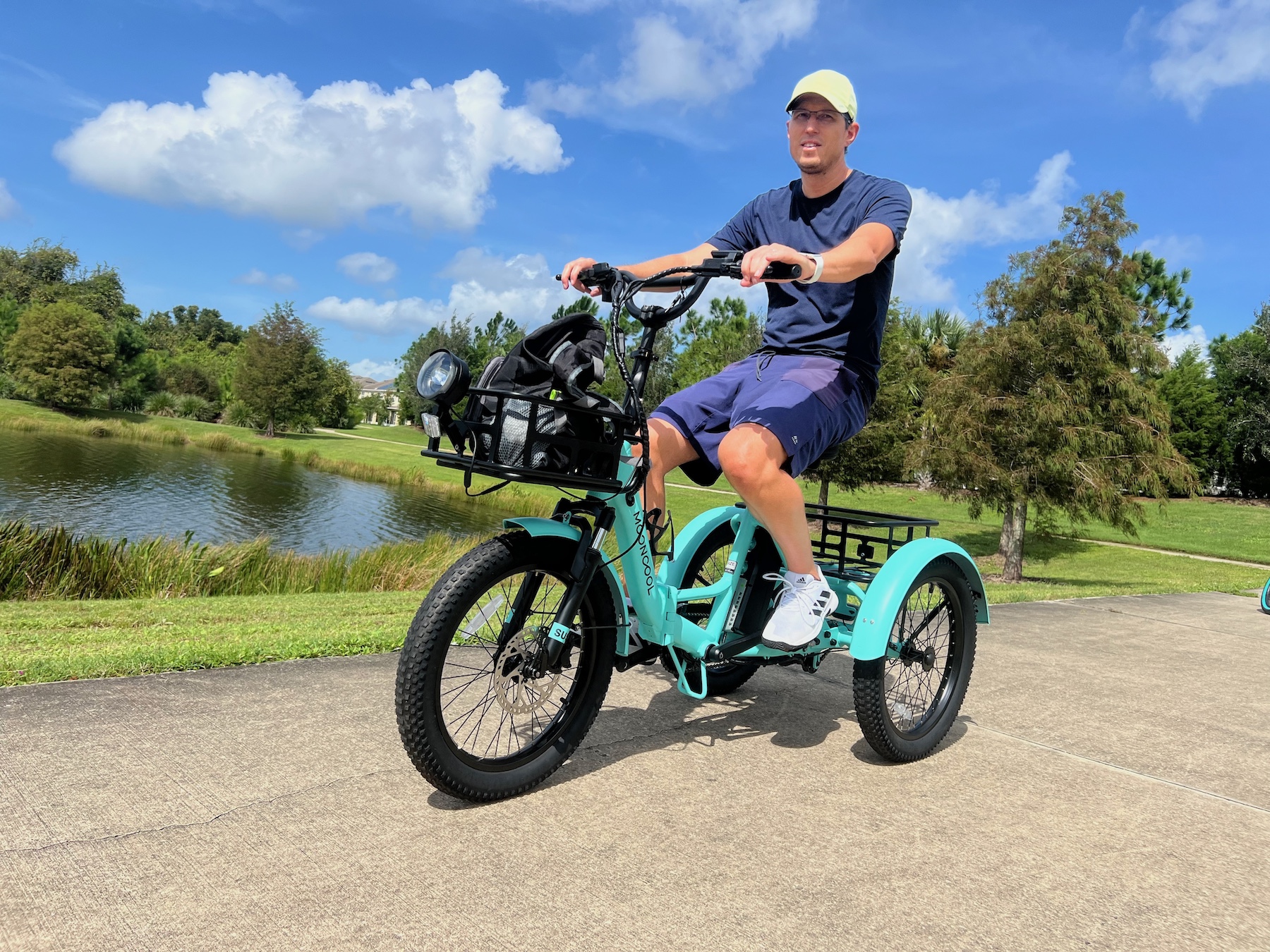Sign up for daily news updates from CleanTechnica on email. Or follow us on Google News!
Say the word “hurricane,” and people immediately think of strong winds ripping off roofs and knocking down power lines. That is certainly part of the story. Right at this moment, more than 3 million people in Florida are without electricity as a result of strong winds from Hurricane Milton. We have been conditioned to classify hurricanes by wind speed and nothing else. Category 1 is sustained winds of 74 to 95 mph. Category 2 is sustained winds of 96 to 110 mph. Category 3 is sustained winds of 111 to 129 mph. Category 4 is sustained winds of 130 to 156 mph. Category 5 is sustained winds of 157 mph or more. With more powerful storms happening with increasing frequency, weather officials have suggested adding a Category 6 for storms with sustained winds of 170 mph or more.
Hurricanes Are More Than Just Wind
Wind can cause severe damage, no doubt about that. But there are three other factors associated with hurricanes that are just as dangerous that are not included in the definition of what makes a hurricane a hurricane — rain, storm surge, and tornadoes. Much of the damage from hurricanes today is from flooding, either from heavy rain or from ocean water that is pushed ashore ahead of a powerful storm. In the Tampa area, that storm surge from Hurricane Milton was predicted to be as much as 12 feet! Imagine sitting in your living room and seeing a wall of water 12 feet high headed your way. If you lived in a typical one story house, it would be completely underwater.
Flooding also comes from heavy rain. Scientists say a 1º C rise in the surface temperature of the ocean means a 7% increase in the amount of moisture the air above the ocean can hold. 7% more moisture means 7% heavier rain. The surface temperature of the ocean in some places is now 2º C warmer than it once was. There are reports that the surface temperature in the part of the Gulf of Mexico where Hurricane Milton formed is warmer than that, which means the storm could contain up to 20% more moisture. All that moisture is now begin dumped on the state of Florida as the storm moves from west to east.
Just 2 weeks ago, people in North Carolina got a taste of how this phenomenon works when Hurricane Helene dumped up to four feet of rain on some parts of the state. As Bill McKibben points out, it’s not the wind that does the damage, it is the flooding that comes after these more powerful hurricanes. The flood waters invade our homes, soaking the drywall and carpets, which usually renders a home uninhabitable. The roof may be intact, but everything inside has to be ripped out and thrown away. Who is going to do that work? Certainly most Americans don’t have the skill or the energy to do it, and if there are a few hundred thousand other homeowners in the same general area with damaged homes, good luck finding a contractor willing and able to do the job.
Just imagine for a moment your home with soggy carpets and walls with maybe a few inches of mud thrown in as well. How do you live there? How do you eat, cook, take care of kids, or earn a living? Even if you have insurance, good luck getting enough money to repair your home. As soon as a disaster hits, like what happened with hurricanes Helene and Milton, building materials double or triple in price, leaving you financially underwater even after the flood water recedes.
Hurricanes & Tornadoes
There is one more factor associated with today’s hurricanes — more frequent and stronger tornadoes. As Milton was coming ashore near Tampa, almost 200 tornadoes were reported, many on the east coast of Florida far in front of the eye of the storm. Damage from tornadoes is more localized, but can be more catastrophic than wind damage from hurricanes themselves. Here’s a video. Imagine this monster bearing down on you!
St. Lucie County Sheriff Keith Pearson told the Washington Post there were “multiple fatalities” after a tornado struck Spanish Lakes Country Club near Fort Pierce, Florida, at around 4:30 pm on Wednesday. Pearson was not able to confirm how many as of late Wednesday. Search and rescue crews were combing through “dozens” of tornado-struck areas before Milton’s core arrived, said Erick Gill, a county spokesman. “I’ve worked here for 21 years. I’ve been through multiple hurricanes, tropical storms, including Frances and Jeanne 20 years ago, which impacted our area greatly and had multiple fatalities,” Gill said. “And this is going to exceed those storms.”
Most of southern Florida found itself under a tornado warning at least once Wednesday afternoon, and in some cases, many times. The National Weather Service issued at least 98 tornado warnings across the state between noon and about 6 p.m., as some 19 tornadoes touched down, according to officials. A large tornado was confirmed by the National Weather Service near Ochopee, Florida, on Wednesday.
Meteorologists had warned well before Milton’s approach that tornadoes could be among the storm’s four chief hazards, along with damaging winds, flooding rains, and storm surge. Yet even the experts did not foresee the severity of the tornado outbreak, which could be one of the most active on record in the state. “Normally you only get a couple of these hazards,” Jamie Rhome, director of the National Hurricane Center, told CNN. “To get all four like this, to converge, is truly unusual.”
While tornadoes are common hazards at the fringes of tropical storms, it is unusual for a hurricane to spin up so many damaging and long-lived cyclones. “Typically the stronger the hurricane is when it makes landfall, the more likely it is to see tornadoes from the outer bands,” said Jana Houser, an atmospheric scientist at Ohio State University. “This does seem to be on the high end of what one might expect for warnings in a hurricane.”
Tornadoes are a relatively common threat as hurricanes transition from water to land. As a hurricane passes over water, it glides over a frictionless surface. Winds are uniform in speed and direction throughout the height of the storm, Houser said. But as the outer band of hurricanes make landfall — where they encounter trees and buildings — tornado risks increase. As those obstacles slow winds closer to the ground, faster winds overhead cause the air to rotate vertically, like a pinwheel. Fast rising air in thunderstorm clouds in the outer bands of a hurricane can then cause that rotation to shift sideways, spinning it like a frisbee and creating a tornado. Stronger updrafts can cause the tornadoes to spin faster, intensifying them and their potential for destruction.
Tornadoes typically develop in a storm’s right front quadrant, where winds are moving in the same direction as the storm’s motion. That is precisely what happened with Hurricane Milton. People in southeast Florida were surprised by the tornadoes that occurred in their area because the projected storm track was well to the north of them. But there they were, in the right front quadrant of the storm. That is also the area where storm surge — a wall of ocean waters over normally dry land — is the worst.
This tornado outbreak may have also had additional fuel from nearby strong winds over Florida, not associated with Milton. Houser said the winds about 3 to 5 miles above the ground helped promote rotating storms, which provided the vigorous upward motion to generate the necessary rotation for the tornadoes. The combination of those winds with the updrafts within the storm itself was “like the golden ticket” for strong tornado activity, Houser said.
The multiple tornadoes associated with Hurricane Milton prompted the Weather Service to warn of a “particularly dangerous situation,” a label they apply only rarely, when long-lived, strong, and violent tornadoes are possible. “You are in a life threatening situation,” a tornado warning issued at 2:17 p.m. said. “Flying debris may be deadly to those caught without shelter. Mobile homes will be destroyed. Considerable damage to homes, businesses, and vehicles is likely and complete destruction is possible.”
The Takeaway
There was a sense of relief spread across Florida as Hurricane Milton dropped to “only” a Category 3 hurricane as it approached Milton. That just goes to illustrate how the ranking system for hurricanes can give people a false sense of security. We have not been trained to pay attention to the other three dangers from hurricanes — rain, storm surge, and tornadoes. We hear that a storm has weakened and we think we are home free. By focusing on wind speed, we ignore the other threats that hurricanes bring with them, which means we let down our guard and get blindsided by rain, storm surge, or tornadoes because we have been trained to ignore those things. That won’t be the case much longer.

Have a tip for CleanTechnica? Want to advertise? Want to suggest a guest for our CleanTech Talk podcast? Contact us here.
Latest CleanTechnica.TV Videos
CleanTechnica uses affiliate links. See our policy here.
CleanTechnica’s Comment Policy





